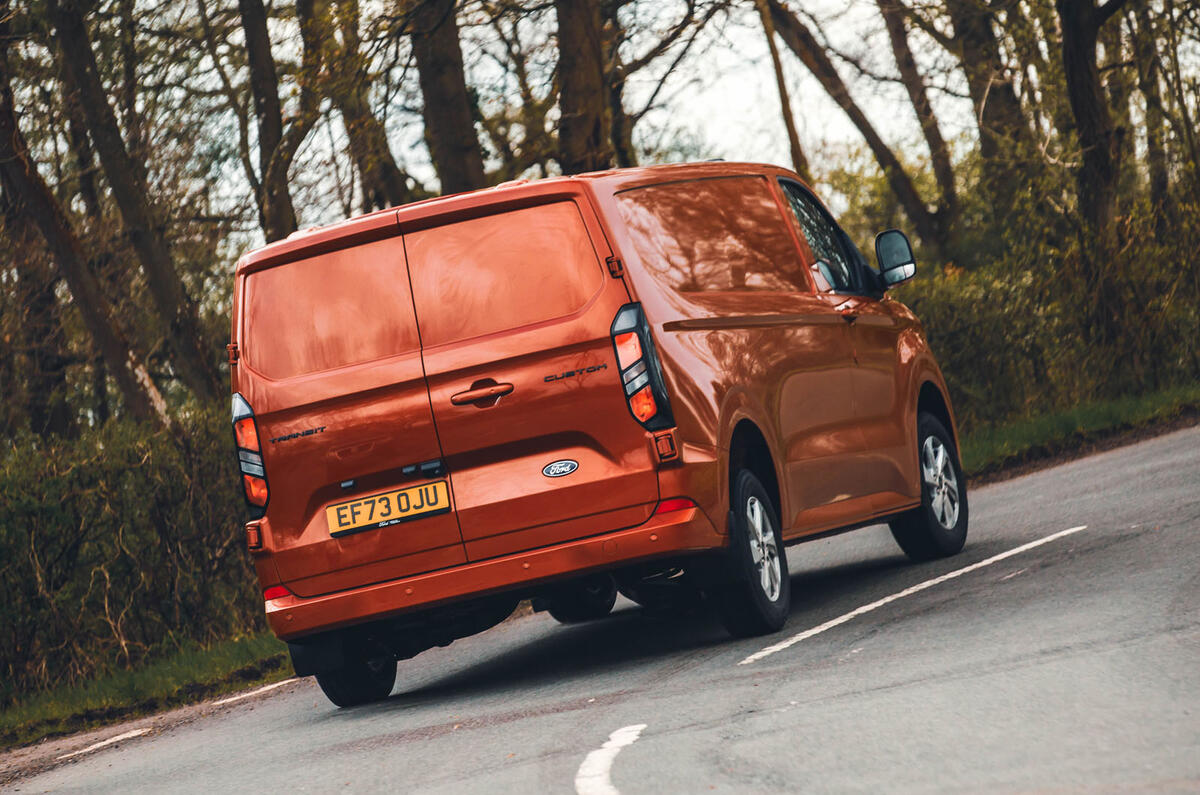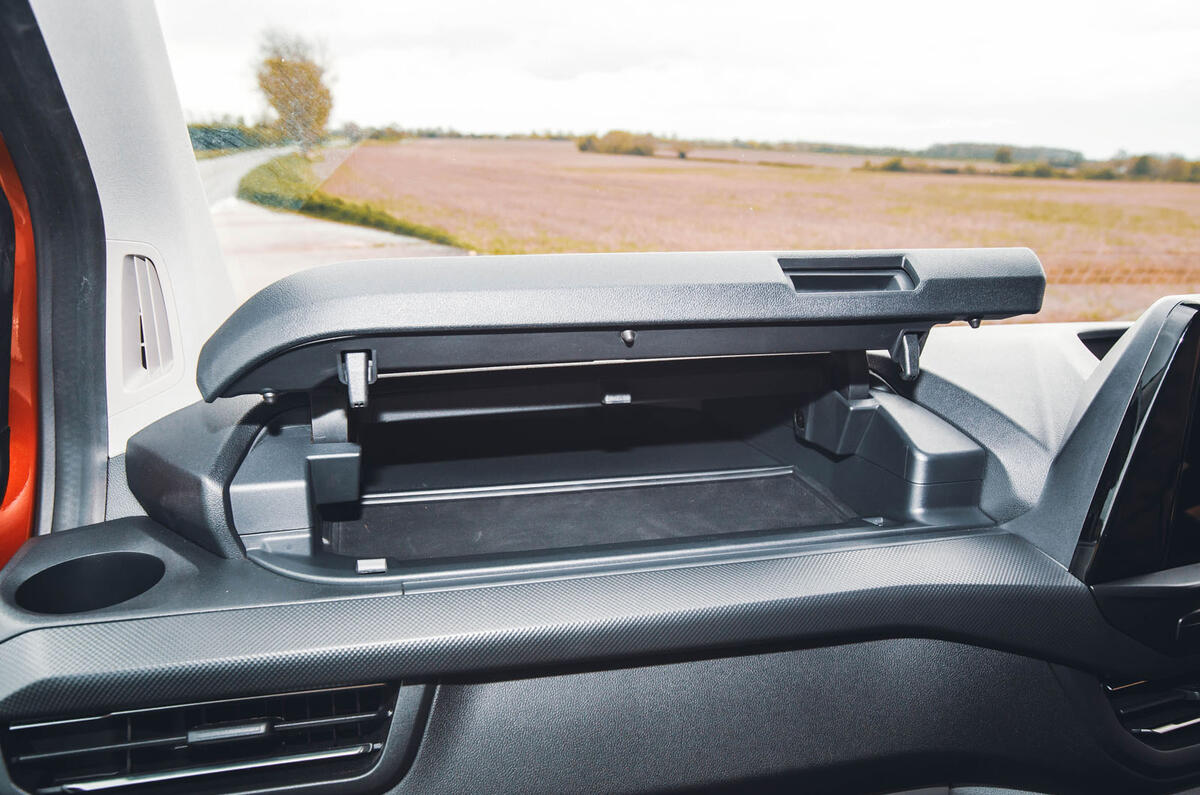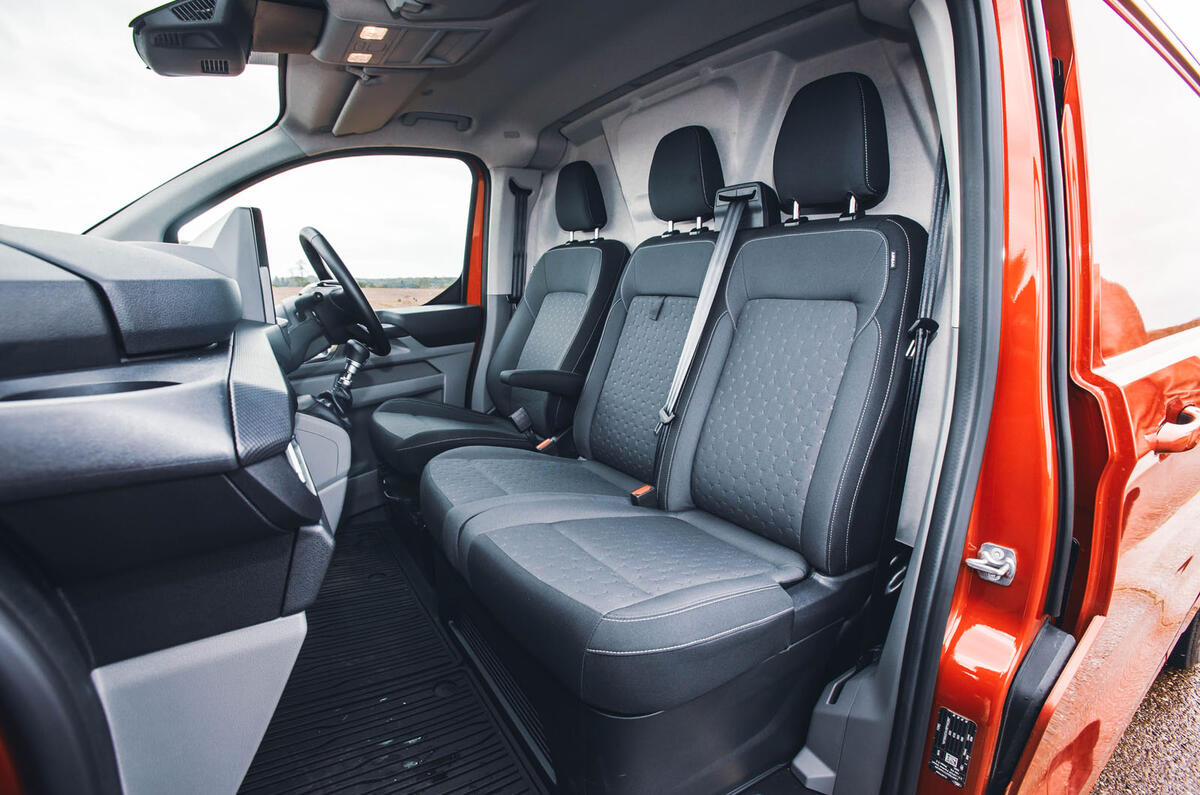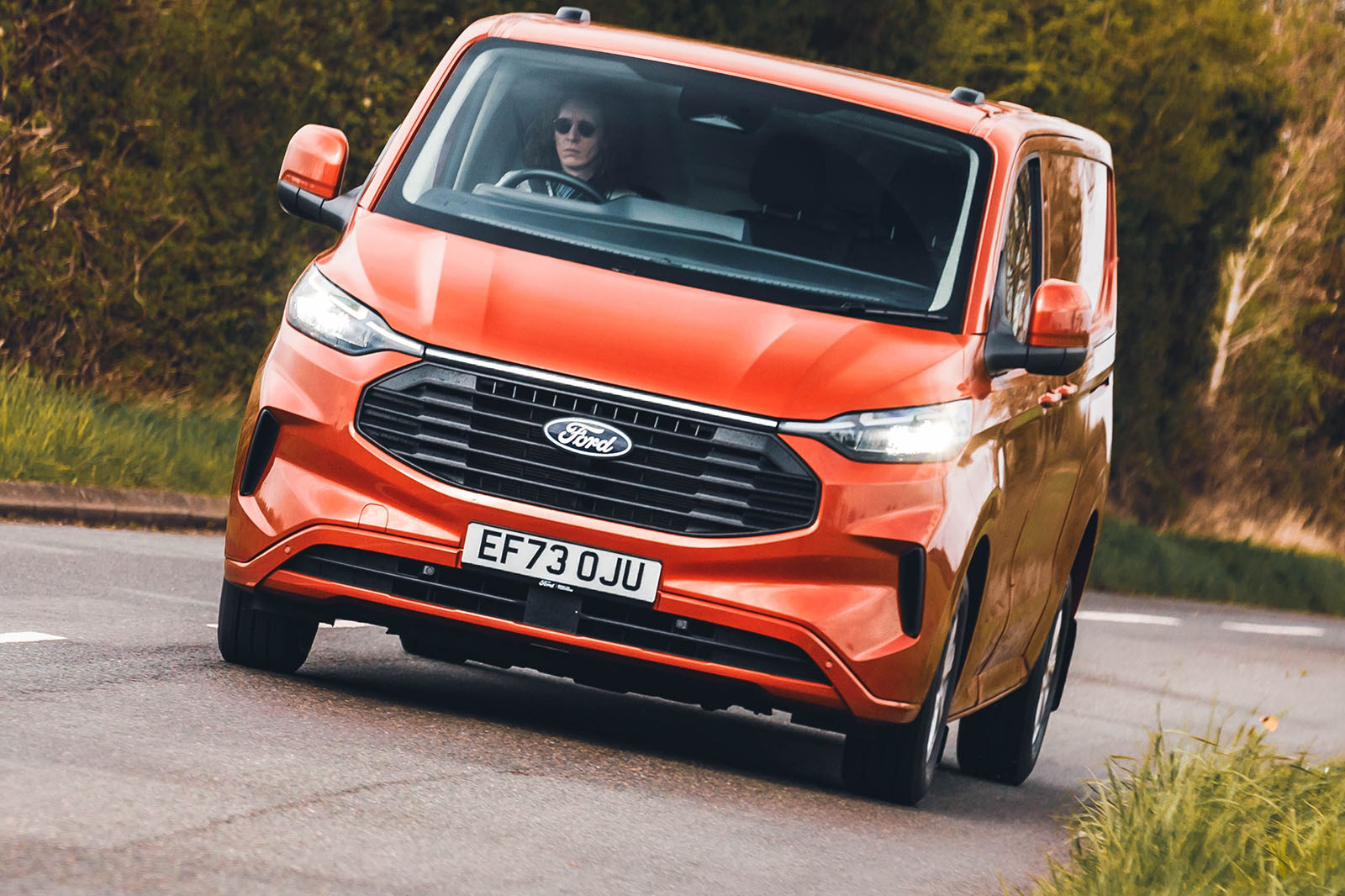If you’re not used to driving vans, it takes a moment to acclimatise to just how high you sit, and how perched over the front of the vehicle you feel.
That’s not helped by how sharply the bonnet falls away – you can’t see the edges very easily. Once accustomed, you do start to appreciate your towering viewpoint.
The Custom has received quite the digital makeover, with every version including the entry-level Leader trim featuring a 13in central touchscreen and 12in digital gauge cluster. If that seems remarkably generous, it has also allowed Ford to move a large number of functions away from physical buttons and onto the touchscreen.
Only a volume knob and a panel with four buttons remain. The latter control the drive modes, vehicle settings, parking sensors and windscreen demist.
Theoretically this is quite a compromised set-up, but as in Ford passenger cars, all the important controls are only one or two taps away, so it works quite well.
The rest of the cabin offers a good amount of storage but lacks a useful bin within easy reach for disposing of various odds and ends. The large tray behind the gauge cluster leaves items out of sight, the twin gloveboxes are useful but a bit of a stretch and the multi-tiered trays in the doors are slightly too shallow to commit items of any value to. The tray that folds out of the middle seat could have been made much more useful with an anti-slip coating and a stronger elastic band. There’s some additional storage on the options list but our test van didn’t have any of it fitted.
As is to be expected in a van, there is little in the way of soft-touch materials, but everything looks modern and attractively designed. The cloth seats in our test van felt hard-wearing, and the gearlever and steering wheel were covered in Sensico artificial leather.
However, opinions among testers were divided about the quartic steering wheel, with some finding it uncomfortable to hold on longer drives. The shape is functional, or at least it can be if you have specced the £500 Cab as Office Pack, which allows it to flip up and turn into a table. Unfortunately our test van didn’t have the option, because it does sound like a must-have feature for the busy driver on a lunch break.
Ford is proud of the various new features, like the steering wheel desk, that serve to make drivers more ‘productive’. Again, our demo sadly didn’t have any of them. The gear selector in automatic versions moves to a stalk on the steering wheel to free up knee space.
Aftermarket additions (like additional lights and cabinets) can be plugged in to the van’s electrical system and be controlled through the infotainment screen. It’s also possible to programme a routine for deliveries, so that, for example, the sliding doors will open and the hazards will turn on automatically.
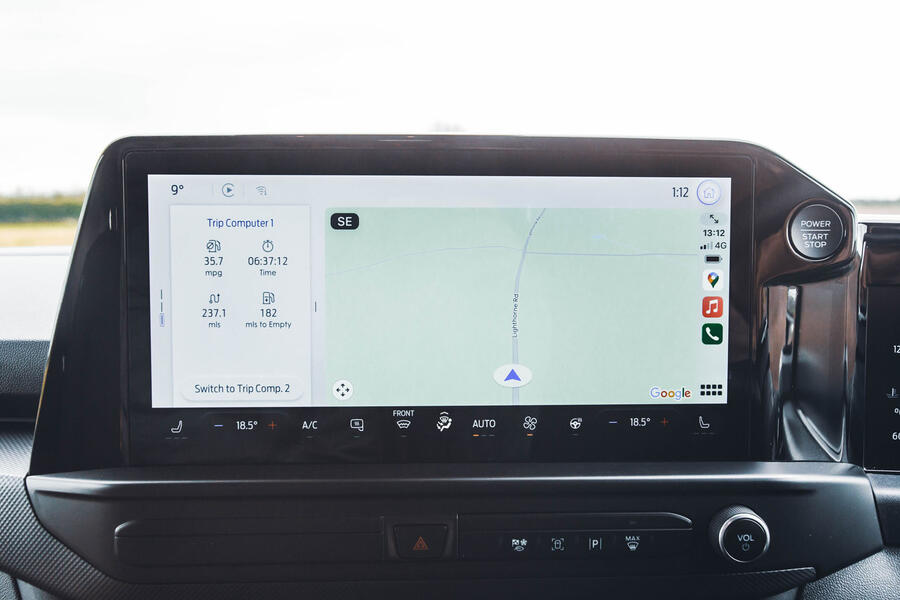
Multimedia system
Every Transit Custom gets the same 13in touchscreen with Sync 4, the latest version of Ford’s multimedia system. As standard, navigation isn’t included, but many drivers will use their phone anyway.
Both Apple CarPlay and Android Auto are wireless and integrated neatly into the native system. Phone mirroring is displayed large but the shortcut buttons andclimate controls remain on screen.
Perhaps somewhat surprisingly for a commercial vehicle, the Custom also gets a digital gauge cluster as standard. It contains a digital speedo, a customisable panel and a bar tacho, which would have been clearer as a round dial.
The standard audio system is fairly decent, and can be upgraded to a Bang & Olufsen system with six speakers for £750. That does delete the load-through bulkhead to make space for the subwoofer.




